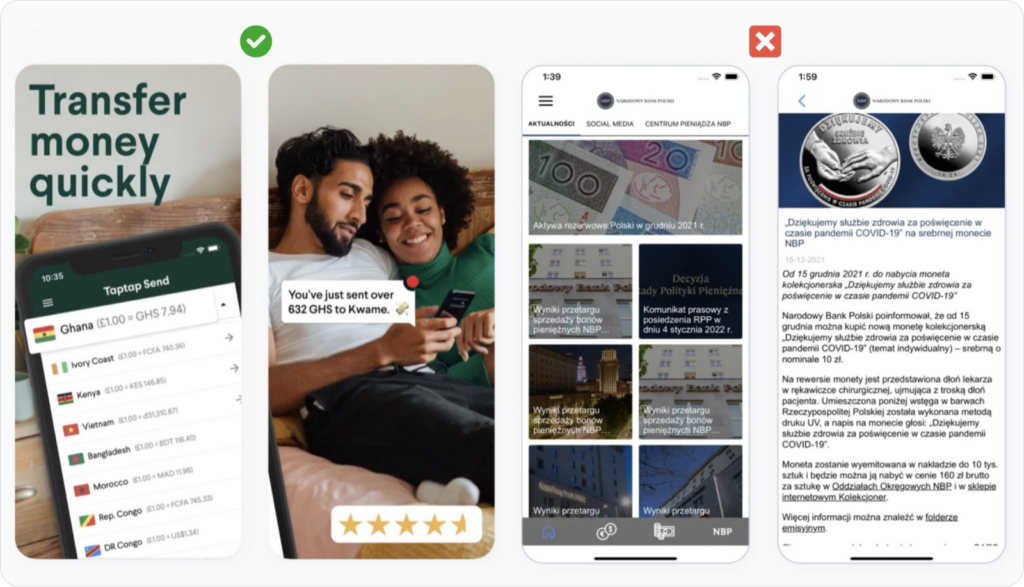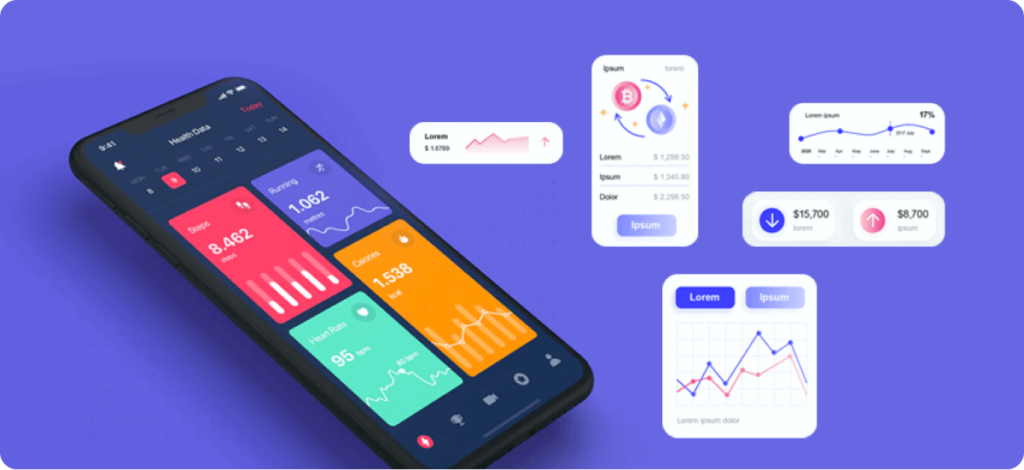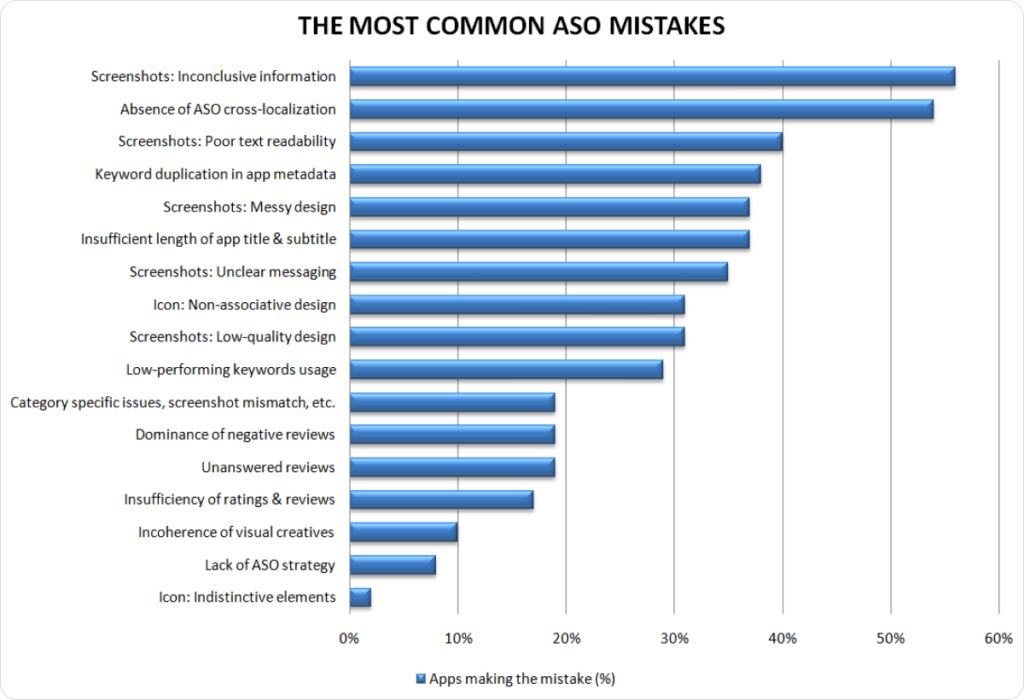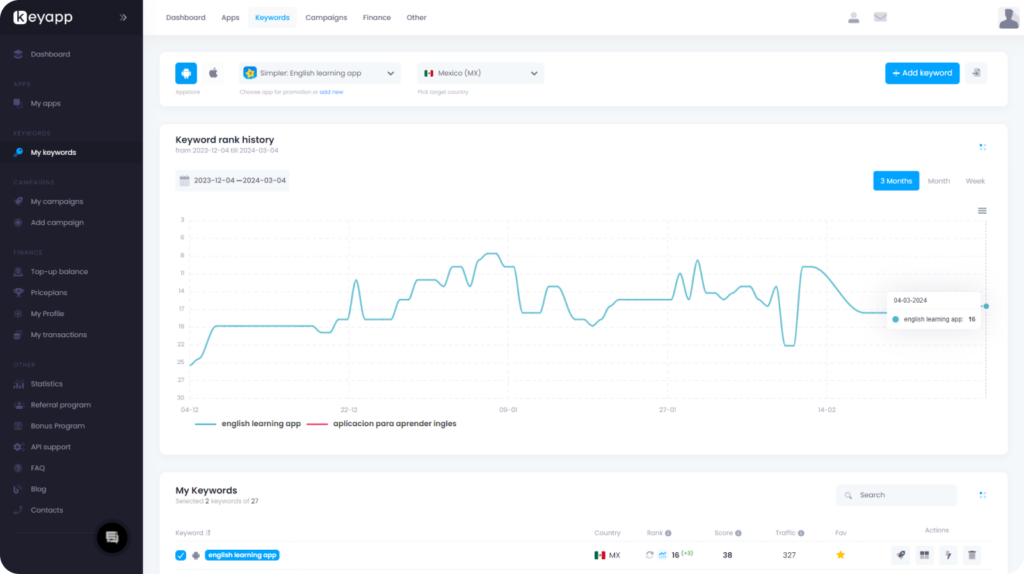Experience is an excellent teacher, but it can also be an expensive one. This is why learning from the errors of others is such a smart strategy. Their successes and failures offer valuable insights you can apply to your own objectives, saving time, resources, and money. The same principle applies to app development and marketing. Understanding ASO mistakes can clear the path to your app’s success.
Following this philosophy, in today’s article, we’ve compiled the TOP common ASO optimization mistakes to avoid in 2025. We’ve categorized these mistakes into two types: basic errors, typically made by newcomers, and advanced missteps, which even experienced ASO marketers might face. Dive into our guide and take a step toward becoming exceptional ASO specialists today!
Basic ASO Mistakes
Overlooking App Quality While Expecting Instant Success
What is ASO at its core? It’s the combination of art and science in optimizing your app’s listing elements – title, description, keywords, screenshots, and more – to enhance visibility in app store searches and drive installations. You can explore more detailed information about app optimization in this special material.
Expecting immediate results
Some developers and marketers mistakenly believe their work is complete once an app is published. They assume users will arrive without further effort. Consequently, they dismiss ASO as unnecessary post-launch. However, ASO is a strategic, ongoing process. Expecting fast and dramatic results after the first round of metadata optimization is unrealistic. An app must acquire a certain number of installs to climb the rankings in app stores.
Current ASO trends highlight the importance of combining Brand Awareness + User Acquisition + ASO + Retention for sustained success. This comprehensive approach will help achieve your desired ROI and position your app for long-term success.
Neglecting the Quality Link
On the flip side, if you’ve been working on ASO for months without visible results, your app’s quality might be the issue. A strong ASO strategy is complemented by a high-quality app. Users drawn to a visually appealing listing who encounter bugs, poor UI, or limited features are unlikely to stay. Therefore, ASO should complement a great app, not compensate for its shortcomings.
Invest in developing a high-quality app that meets user expectations to ensure a positive experience. This will lead to better conversions and positive reviews, enhancing your app’s discoverability through ASO. Remember, a high-quality app paired with effective ASO creates a synergy that drives sustainable success.
The All-or-Nothing Method
Making all ASO changes simultaneously can be overwhelming and ineffective. Instead, implement changes gradually to monitor their individual effects. Why does this matter? Imagine updating text and graphical elements at the same time. Strong text optimization can increase impressions by indexing your app for more keywords. However, it may reduce conversions into installs as the app gains visibility with a broader audience. In such scenarios, evaluating the graphical updates becomes difficult.
For most apps, implementing ASO changes step-by-step is beneficial, as it allows for precise analysis of each modification’s impact. This controlled approach helps developers identify which adjustments truly enhance visibility and drive organic downloads.
Mistakes in Keyword Optimization Strategy
Keywords are the terms users input in app store searches and are crucial for app discovery. Selecting the right keywords is essential for effective App Store Optimization. Learning from others’ mistakes can help you avoid common pitfalls and ensure your app stands out in search results.
Neglecting Keyword Research
Skipping keyword research means missing out on understanding the terms users search for related to your app. To effectively reach your target audience, it’s essential to know what users search for and which keywords competitors are targeting.
By the way, don’t forget that you can check your app indexation for keywords completely for free using the Keyapp platform. There are no limitations on the number of requests or countries you can work with.
Keyword Overuse
Stuffing excessive keywords unnaturally into your app’s title, description, or other fields can harm your ranking. App stores penalize keyword stuffing, and it creates a poor user experience. Use relevant keywords organically and strategically throughout your app store content.
Irrelevant Keywords
Including keywords that are not related to your app’s functionalities or target audience can negatively impact conversion rates. Don’t try to be everything to everyone. Choose keywords that are highly relevant to your app’s functionalities and target the specific needs of your ideal users. Stick to keywords that accurately describe your app and what it offers. If you are interested in finding relevant keywords with high search volume and low competition, then we recommend checking out our video on this topic.
Using Restricted Words
Including copyrighted terms, stop words, or trademarks in your app store listing can result in rejection. Ensure your keywords are appropriate and don’t infringe on intellectual property rights.
Failing to Localize Keywords
In today’s global app market, neglecting to localize keywords for different regions can limit your app’s reach. To connect with users worldwide, translate your keywords and adapt them to local search trends and cultural preferences.
Effective keyword optimization requires a strategic approach beyond merely adding as many keywords as possible. Use relevant, targeted keywords to help the right users discover your app.
Don’t Let Your ASO Assets Hold You Back
In app stores, where users make quick decisions based on initial impressions, visual elements play a critical role in attracting downloads. Creating impactful visuals goes beyond aesthetics. Some common missteps in optimizing these assets can undermine your ASO efforts.
Low-Quality Screenshots and Previews
Users rely on screenshots and app previews to gauge an app’s functionality and user interface. Using blurry or generic visuals fails to showcase your app’s value effectively. Invest in clear, engaging screenshots that highlight key features and overall user experience. Similarly, create dynamic previews that demonstrate how your app solves problems or provides value.

Ignoring Reviews
Responding to reviews with generic phrases or not responding at all is a missed opportunity. Users evaluate apps based on developer responses, so active support and effective problem-solving are crucial. Provide detailed solutions for negative reviews and encourage users to update their feedback once issues are resolved. By the way, Google Play indexes both reviews and developer responses. Incorporate relevant keywords in responses while maintaining clarity.
Overlooking Video Previews
Video previews provide a more immersive experience than static screenshots, showcasing app features in action. While they require more resources to create, neglecting them puts you at a disadvantage compared to competitors who use this storytelling tool.
Prioritizing high-quality visuals, A/B testing, and utilizing video previews can optimize your app store assets to represent your app’s value effectively and attract engaged users. Remember, first impressions matter, and your app’s visuals are your opportunity to make a positive one.
Advanced ASO Mistakes
Neglecting to Monitor and Analyze Performance
Like any investment, effective ASO requires a data-driven approach. This involves regularly tracking key performance metrics and analyzing them to identify improvement opportunities. Unfortunately, many app developers overlook this essential process, limiting their app’s potential.
Ignoring Metrics
Not tracking metrics like app store ranking, organic downloads, and user acquisition costs creates blind spots in your ASO strategy. These insights reveal how users discover your app and how effective your efforts are in driving downloads. Without this data, optimizing your strategy becomes a challenge.

Regularly monitoring these metrics helps identify issues, track progress, and measure ASO effectiveness. Using tools with detailed analytics can keep you ahead of competitors and improve performance in the crowded app market. For guidance, read our article on monitoring ASO effectiveness and KPIs.
Failing to Utilize Data
Simply collecting data isn’t enough. The true value lies in analyzing the information and using it to refine your strategy. Ignoring insights can result in wasted resources and missed opportunities.
Analyze trends, identify underperforming keywords, and test different app store elements based on gathered data. This ensures your ASO efforts evolve alongside user behavior.
Overlooking Multi-Channel Ecosystems
App downloads rarely occur solely due to ASO. Neglecting the impact of marketing channels like paid ads, social media, and influencer partnerships skews your perception of ASO’s effectiveness. Use attribution tools to understand how various channels contribute to downloads for a holistic view of your strategy.
Avoid these common pitfalls by prioritizing data-driven monitoring and analysis. Continuous learning and adaptability are key to long-term app store success.
Ignoring Emerging Trends
The mobile app landscape evolves constantly, requiring developers to stay informed about trends and adapt strategies accordingly.
Disregarding Algorithm Updates
App store algorithms determine rankings and visibility. Failing to stay updated on changes in Google Play and Apple App Store algorithms can leave your app behind.
Monitor official announcements, industry blogs, and expert insights to understand algorithm updates. This ensures your app remains competitive and visible.
Neglecting Voice Search
Voice search assistants like Siri and Google Assistant have transformed user behavior. Optimizing your app listing for voice search is vital for discoverability.
Use natural language phrases and long-tail keywords in your app title and description to cater to voice queries. Additionally, consider adding voice-activated features to your app.
Missing Seasonal Trends
User behavior and app store trends vary throughout the year. Ignoring these patterns can reduce visibility during peak periods. For instance, optimizing listings around holidays or events can boost discoverability.
Analyze historical data, track seasonal patterns, and adjust your ASO strategy to maintain relevance throughout the year. Staying ahead of trends ensures your app remains competitive and discoverable.
Not Continuously Optimizing Your Strategy
ASO isn’t a one-time fix. The strategies that work today might not be effective tomorrow. A successful ASO strategy requires ongoing effort and refinement.
Monitor rankings, search term popularity, competitor activity, and user behavior. Regularly update metadata and graphics to maintain visibility. Even if you achieve top positions, continuous improvement is essential.
Top 5 Rules for Avoiding ASO Mistakes
- Learn from Others and Your Users: Conduct competitor analysis to understand what works for them, and actively engage with your users through reviews and feedback. Both sources offer valuable insights to refine your ASO strategy and improve user experience.
- Prioritize Data-Driven Decisions: Don’t rely solely on intuition or guesswork. Track key metrics like app store ranking, organic installs, conversion rates, and user acquisition costs. Analyze this data to identify areas for improvement and inform your ASO decisions.
- Focus on Quality Alongside ASO: While ASO is crucial, neglecting the quality of your app itself can hinder its long-term success. Invest in refining your app’s functionalities, user interface, and user experience to create a product that users will enjoy using.
- Stay Ahead of the Curve: The app store landscape is constantly evolving. Keep yourself updated on the latest changes in app store algorithms, user search trends, and emerging technologies. Adapt your ASO strategy to stay competitive and relevant.
- Embrace Continuous Optimization: ASO is not a one-time fix. Treat it as a continuous process, regularly monitoring performance metrics, analyzing user behavior, and adapting your strategy based on data and emerging trends.
Summary
By avoiding these mistakes and prioritizing continuous improvement, you can enhance your app’s visibility, optimize ASO efforts, and achieve long-term success. Remember, app stores are a journey, not a destination. Your dedication to learning and adapting will unlock your app’s full potential.
We hope this article is helpful. Feel free to share it with colleagues or reach out with questions – we’re happy to help!
























